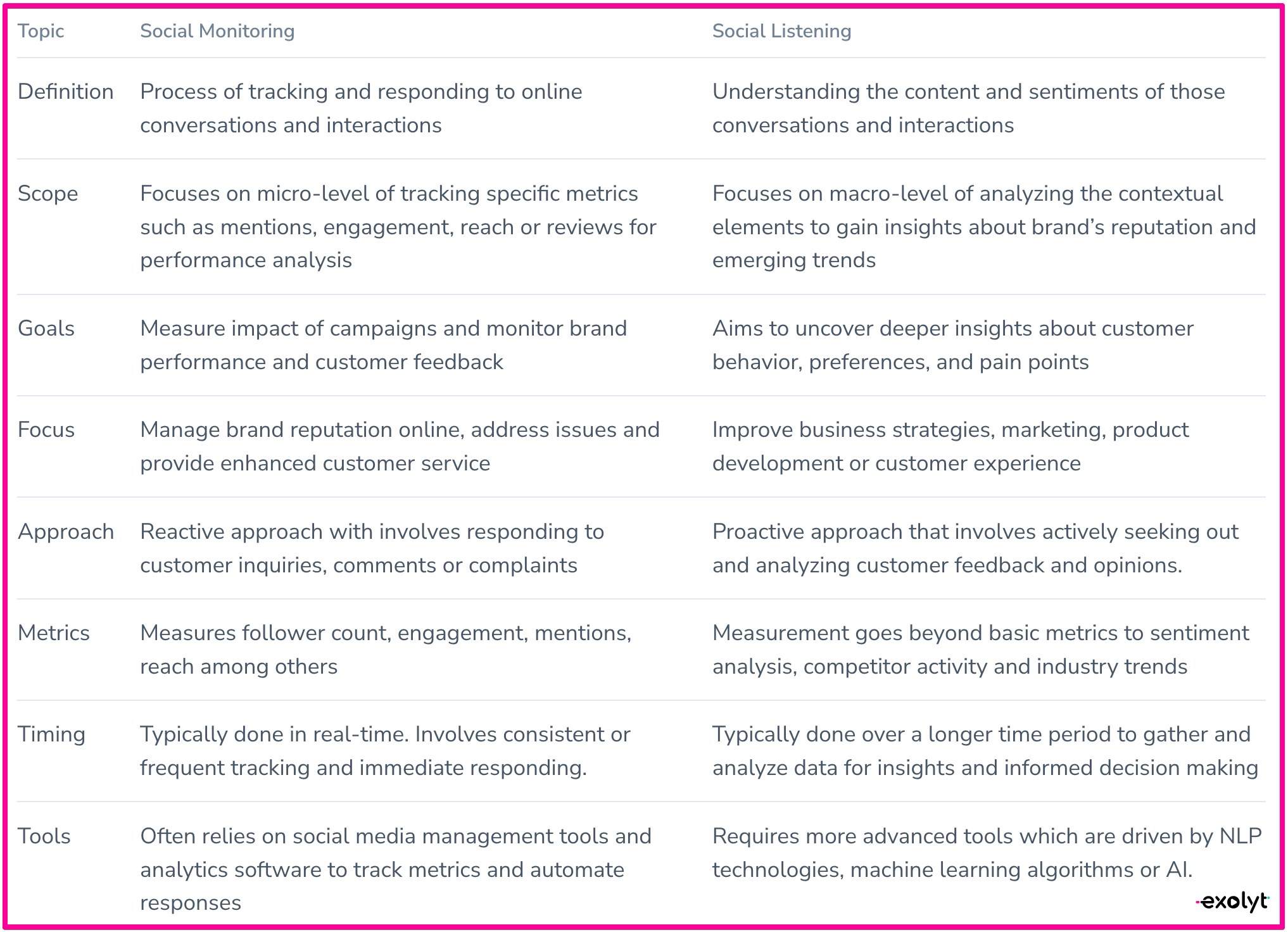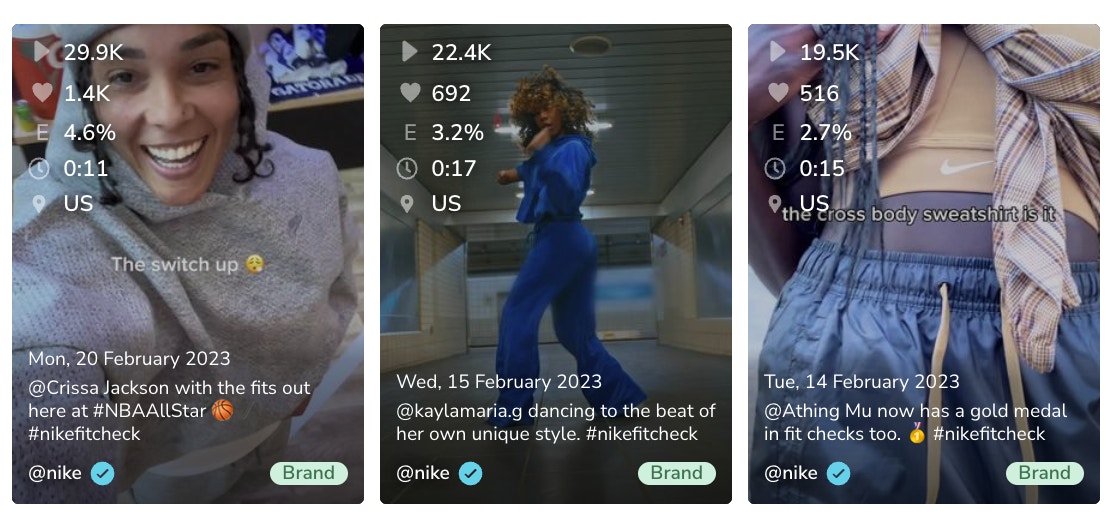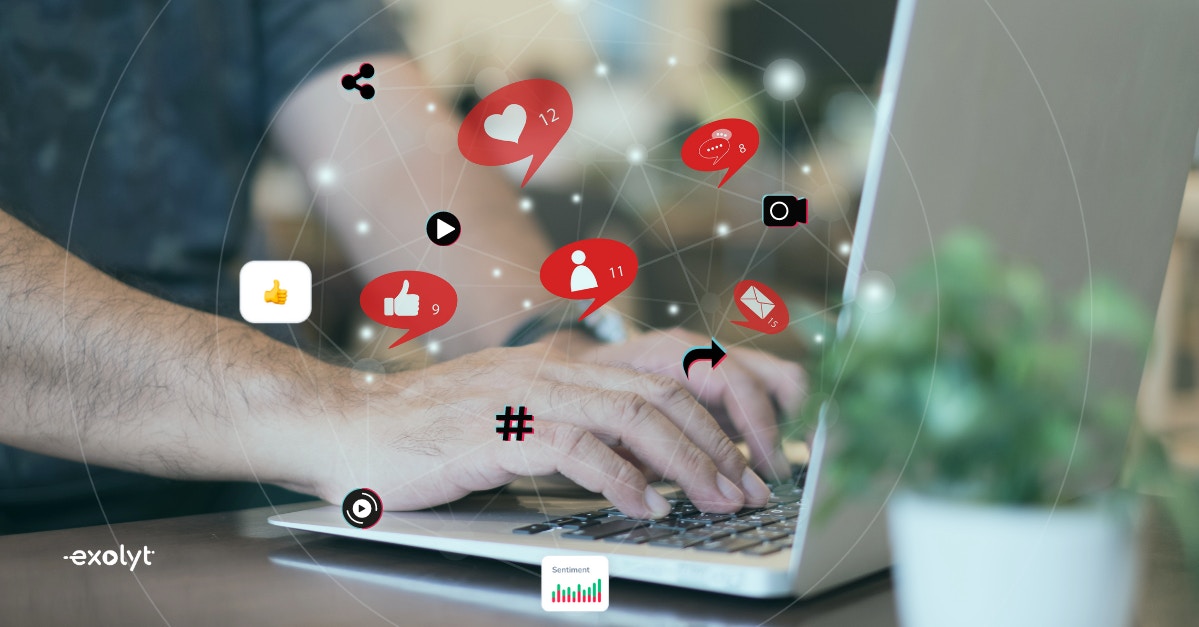Research by Smart Insights shares that 90% of social media users have already used social media to communicate with a brand or a business, and 31% turn to social media to make pre-sales inquiries.
It’s no secret that with the dawn of a fresh digital era post covid when all forms of communication and commerce moved online, the importance of social media skyrocketed.
Especially TikTok in Q1 2020, which generated the most downloads for any app ever, accumulating more than 315 million installs across the App Store and Google Play.
It is no longer the only place people build connections but learn, research, share, and buy. This highlights the importance of strategic social media management, which goes beyond just being present on various platforms.
However, with growth in influencer marketing, social selling, and advertising and the rise in the immense volume of conversations on social media, it can be challenging for businesses to keep track of what is being said about their brand, products, or services.
This is where Exolyt TikTok Analytics Tool and its features like Social Monitoring and Social Listening come into play - as they are two essential tools often used interchangeably to help businesses understand their online audience better.
In this blog, we will delve deeper into the concept and explore their differences, their importance in today's digital landscape, and how businesses can use these tools to improve their social media strategies.
Whether you are a small business owner, a marketer, or a social media enthusiast, this blog will provide you with valuable insights on how to leverage social monitoring and social listening to your advantage.
What is social media monitoring?
Social monitoring is the process of tracking, discovering, and observing brand mentions, tags, and queries across social media platforms, blogs, forums, and review sites so you can respond to them quickly and effectively.
In simple terms, you monitor social media in order to meet and engage with your customers where they truly are. This is not a common practice these days but a norm. According to a report by Sprout Social, 76% of US customers expect brands to respond within the first 24 hours.
So, in order to succeed in social media engagement, monitoring is critical. Plus, with newer social media channels flooding the ecosystem and the birth of the influencer marketing industry, monitoring has found an added significance because now, brands must also keep track of the content generated by users for unsolicited comments, mentions, and reviews promoting or de-influencing a product or service.
So, social monitoring helps brands to build a bulletproof reactive strategy.
What is social listening?
Social listening is a strategic marketing tool that goes beyond scanning the internet for brand mentions and reviews. It is a branch of audience analysis that involves strategic research, including social monitoring, to extract relevant data and insights to support long-term growth.
It helps to get a broader view of what the customers feel and how they interact with/about your brand, product, or industry, including competitors.
Understanding these sentiments can help to mitigate risks, respond to customer needs, make informed decisions, and be prepared for the future. Social listening not only supports marketing in reaching the audience in a timely and appropriate manner but also boosts development and innovation for sustainable growth.
Despite being a rather complex process to understand your customers better when compared to social monitoring, companies are heavily investing in these processes. In a recent Hubspot Research Survey, marketers reported social listening as their number one tactic for building social media strategy.
What are the differences between social monitoring and social listening?

2 examples of companies using social monitoring
Nike
Hashtags are a no-brainer for companies to monitor and measure the performance of their social media or marketing campaigns. Globally popular brands like Nike have taken it one step further by using branded hashtags to create user-generated content (UGC)
Most of Nike’s TikTok account consists of user-generated content using branded hashtags. The hashtags not only help the company to monitor the brand’s online reputation but also help boost authenticity for the brand with UGC - a perfect way to leverage the best of the influencer marketing ecosystem.

Source: Exolyt TikTok Analytics Tool - UGC from Nike’s TikTok profile showcasing branded hashtag ‘nikefitcheck’ with relevant metrics useful for brand performance monitoring.
Doritos
Over the years, many companies have chosen popular events to push campaigns, advertise, and boost sales. Although the idea is not very different now, the channels have been replaced. Nowadays, brands leverage social media to boost reach and drive engagement. Monitoring these metrics can help them to predict sales and build brand value.
This is what Doritos did just like many other brands during the Super Bowl LVII 2023 event. While most companies advertised commercials during the game’s national airtime, Doritos took it a level further. It launched a TikTok dance contest, which challenged users to post a video of themselves dancing with the hashtag #DoritosTriangleTryout for the opportunity to appear in its game day commercial.
The challenge garnered over 14B hashtag views, simultaneously driving user-generated content, which the brand monitored for their game time commercial feature.

Source: Exolyt TikTok Analytics Tool
Read more about the Doritos commercial contest here.
2 examples of companies using social listening
Ryanair
It’s no secret that Ryanair offers ultra-cheap flights across Europe, so listening to the younger travelers and appealing to their psyche to promote wider reach is a brilliant strategy.
The airline showcases a great example of how it's done on TikTok. Their account shot to fame as they leveraged social listening for creating content with the use of native green-screen filters and trending sounds and hashtags, all of which appeal to the audience they are targeting.
The brand has taken up and adapted well to the theme of TikTok trends and cheeky humor, to the point that it has started its own wave of green-screen trends.
So, by tapping into popular trends through social listening, the company has gained a massive popularity and now has over 2 million followers and more than 27 million likes.

Source: Exolyt
Netflix
Netflix is a pioneer in social listening. It consistently taps into new trends to ignite the entertainment world, especially among its largest target audience, the millennials.
Previously, the brand also caught attention with its invention of the Netflix Socks campaign. The company listened to conversations about the brand’s slogan, ‘Netflix and chill,’ and how most people slept during the movie. In response, Netflix came up with the idea of socks that pause the show when you sleep so you don’t miss any of it.
The campaign garnered many positive reviews and even landed them the Shorty Awards.
Recently, Netflix took inspiration from the short video platform industry and its growing popularity on TikTok. It realized the demand for short-format videos in the market and the preference for humorous content online.
So, Netflix revamped its app to include ‘Fast Laughs’ featuring a full-screen feed of funny clips from its big comedy catalog. Read more about the update here.
It's a well-thought-out strategy resulting from social listening to keep viewers engaged with popular, short, fast-moving content and keep them hooked to the platform.
Read 4 other inspiring examples of brands doing social listening, as shared by Jeff Bullas.
Choosing the right approach for social media management
Social media monitoring and social listening are both important aspects of online brand reputation management and marketing strategy. So, it must be chosen carefully based on the brand’s social media management goals.
Social monitoring involves tracking brand mentions, comments, and messages to address any issues or complaints that may arise quickly. Social listening involves monitoring social media trends and conversations to gain insights into customer behavior, sentiment, and industry trends.
So, if your primary goal is to maintain a brand reputation and provide timely customer support, social monitoring is more important. You'll be able to respond quickly to any customer complaints or issues and address them before they escalate.
On the other hand, if your goal is to understand customer behavior and sentiment and gain insights into industry trends, social listening is more important. With social listening, you'll be able to identify patterns in customer behavior and preferences, realize potential problems, explore new strategies, and keep track of what your competitors are doing.
Ultimately, both social monitoring and social listening are important for effective social media management. By combining the two and utilizing Exolyt TikTok Analytics and Social Intelligence Tool, you can gain a comprehensive understanding of your audience, track your brand reputation, and stay on top of industry trends.
Conduct TikTok Monitoring & Listening
Book a live demo with our product manager or start your free trial today to experience first-hand benefits of the platform

